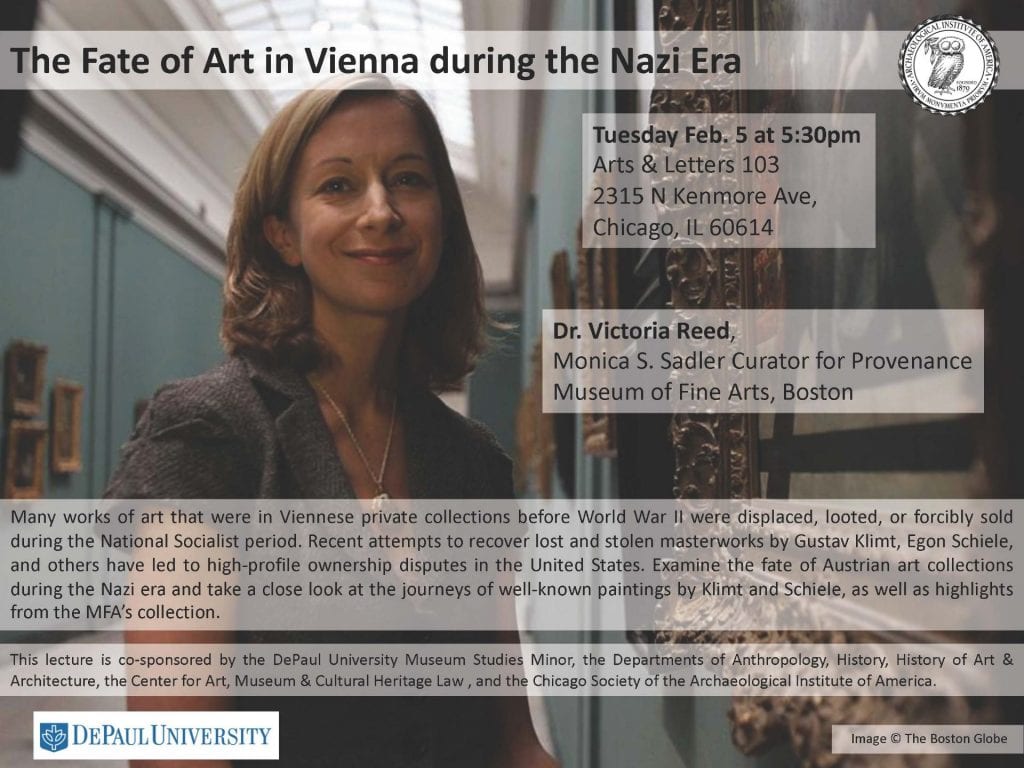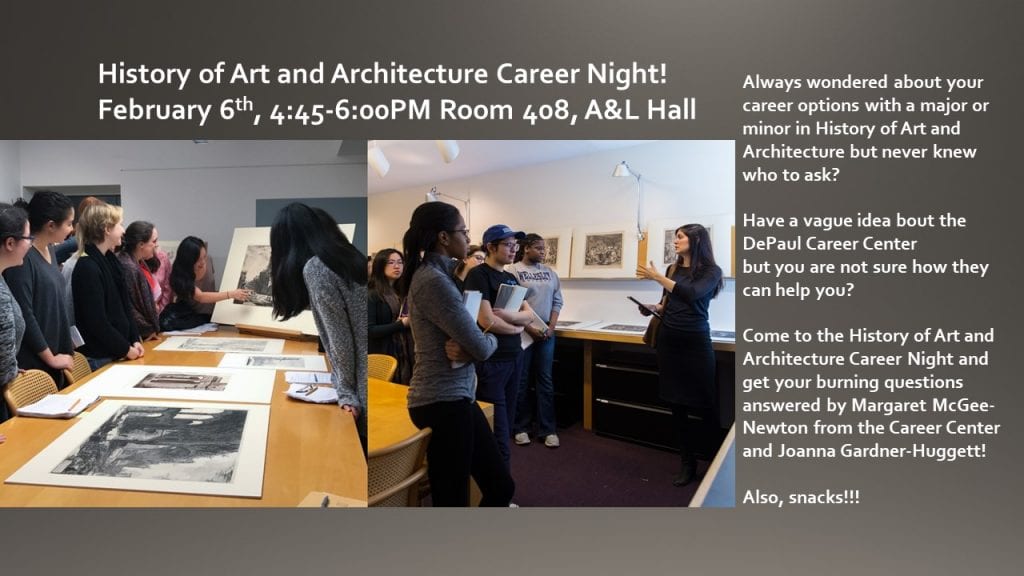Hello!
This is the blog for the Department of History of Art and Architecture at DePaul University in Chicago, IL. We plan to post news about the Department, as well as student news, and some art history news.
A little about us, first! Unless otherwise stated, blog posts are written by Margaret Marnell, the Program Assistant for the Department. You can reach her by e-mail at mmarnell@depaul.edu.
The Department of History of Art and Architecture strives to familiarize our students with works of art that define civilizations around the world from their emergence to the present day. Art history, interdisciplinary by its very nature, examines culture, religion, politics, and environment. The study of art history can prepare you for a variety of careers and post-graduate pursuits, and our classes foster critical thinking skills by developing visual literacy, close reading, persuasive writing, research skills, and oral communication. Art has been used by cultures for millennia to communicate, worship, persuade, and express thoughts (to name just a few). By learning how to analyze and think critically about these pieces, we gain a deeper understanding of what was, and is, important to the cultures and people who created the works. We learn about people who have a different understanding of the world. We start to understand our similarities and differences with people from a different time, place, and culture.
If you’re still wondering, “why art history?” here are a few things that might surprise you. Art history is regularly used by medical schools to help their students learn to observe, empathize, and think critically about their observations; and going to an art museum is starting to be investigated by doctors as a supplement to medical treatments. Police departments are starting to use art history to teach their officers the same skills of observing, empathizing, and thinking critically. Art is quickly becoming a major investment and knowledge of art movements and art history can help one invest wisely. There is a whole section of law focused on the art world that deals with everything from copyright infringement to cultural patrimony and repatriation (DePaul University even has a Center for Art, Museum and Cultural Heritage Law). The FBI even has a team that focuses purely on art crime. Art history isn’t just in a museum, it’s all around us.
Our faculty is one of the most academically diverse in Chicago and we offer classes ranging from survey classes, which are appropriate for people who have no art history background, through upper level classes that are focused on a particular topic, such as “Women in Art”, and “Duchamp and DADAism”. You can see course descriptions for all of our regular classes by visiting the Course Catalog and selecting “Art and Architecture, History of”. We bring regular guest speakers who are experts in the field to give lectures, most of which are open to the public, on special topics. We have a yearly Student Symposium and Paper Prize, where our students present their work to peers and faculty. DePaul has a partnership with the Art Institute of Chicago so our students, faculty, and staff have free admission to the museum (which we take advantage of in our classes). We have a DePaul Night at the Art Institute of Chicago, where faculty, students, and alumni give talks and gallery tours. We also have a student History of Art and Architecture Club which plans field trips and other student focused events.
In addition to the Major in History of Art and Architecture, we also offer three minors: a Minor in History of Art and Architecture, a Minor in Museum Studies, which is offered jointly with the Departments of History, and Anthropology, and the Cities Minor which is offered jointly with the Department of Geography. The Minor in History of Art and Architecture draws students from a huge variety of majors. Because art history is so interdisciplinary, many students find that it is easy for them to connect it in a meaningful way to their major while gaining valuable research and writing skills. The Museum Studies Minor is an interdisciplinary endeavor that addresses the theory, organization, and management of museums and museum collections. Museums themselves are complex organizations within which a diversity of knowledge specialists work together to acquire, conserve, research, communicate and exhibit tangible and intangible evidence of people and their environment. The Cities Minor, meanwhile, explores the variety of ways in which the spaces of cities relate to their historical/geographical materiality. In this sense, culture is broadly construed to encompass the spatial, aesthetic, linguistic, and other social practices that define the material and phenomenological particularities of cities.
If you want to learn more, you can visit us on our Twitter, our Facebook, or on our website. You can find contact information for us here, or you can just say hi on this blog. We’d love to hear from you!


